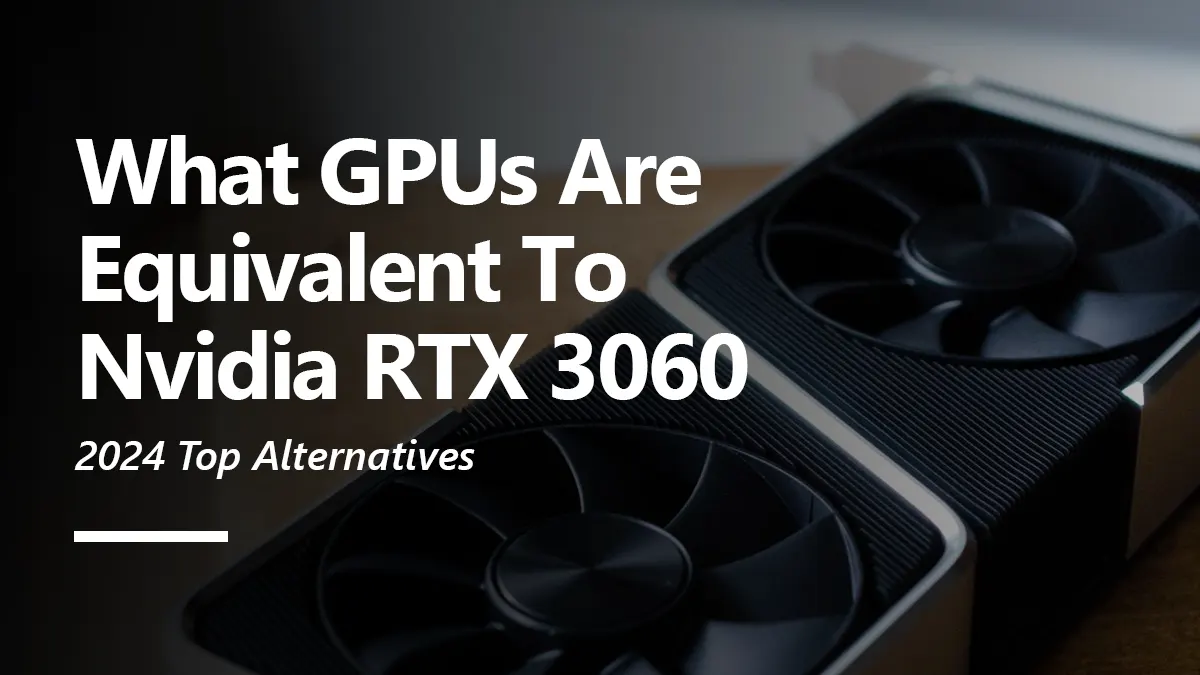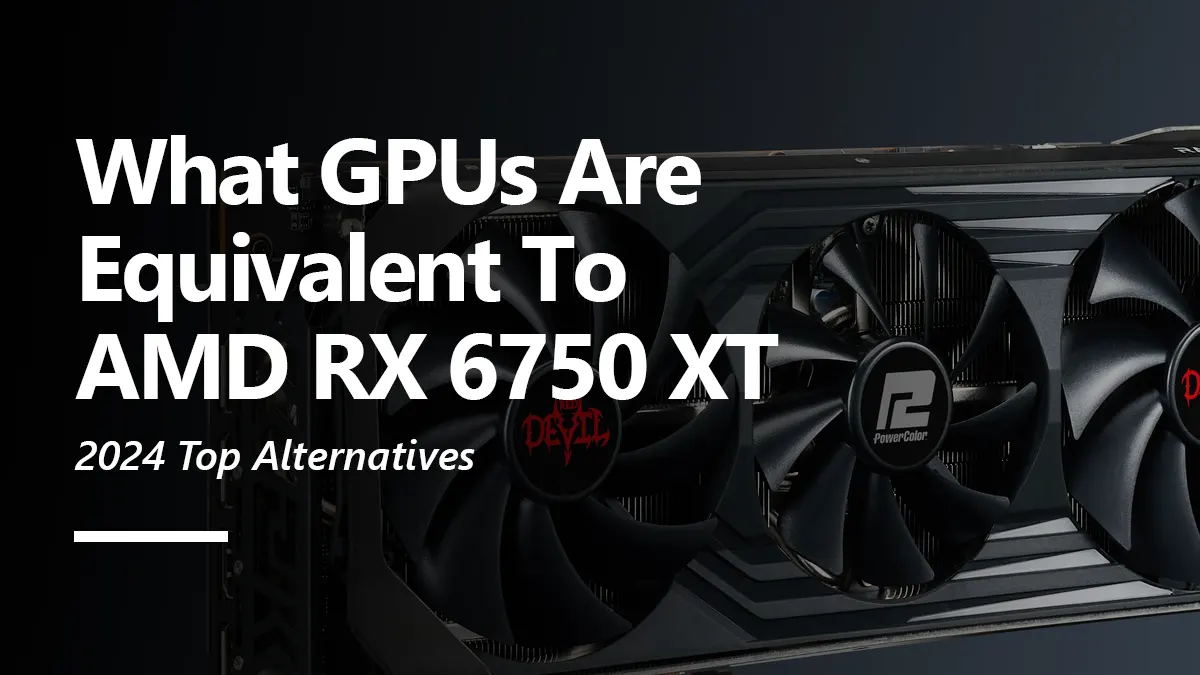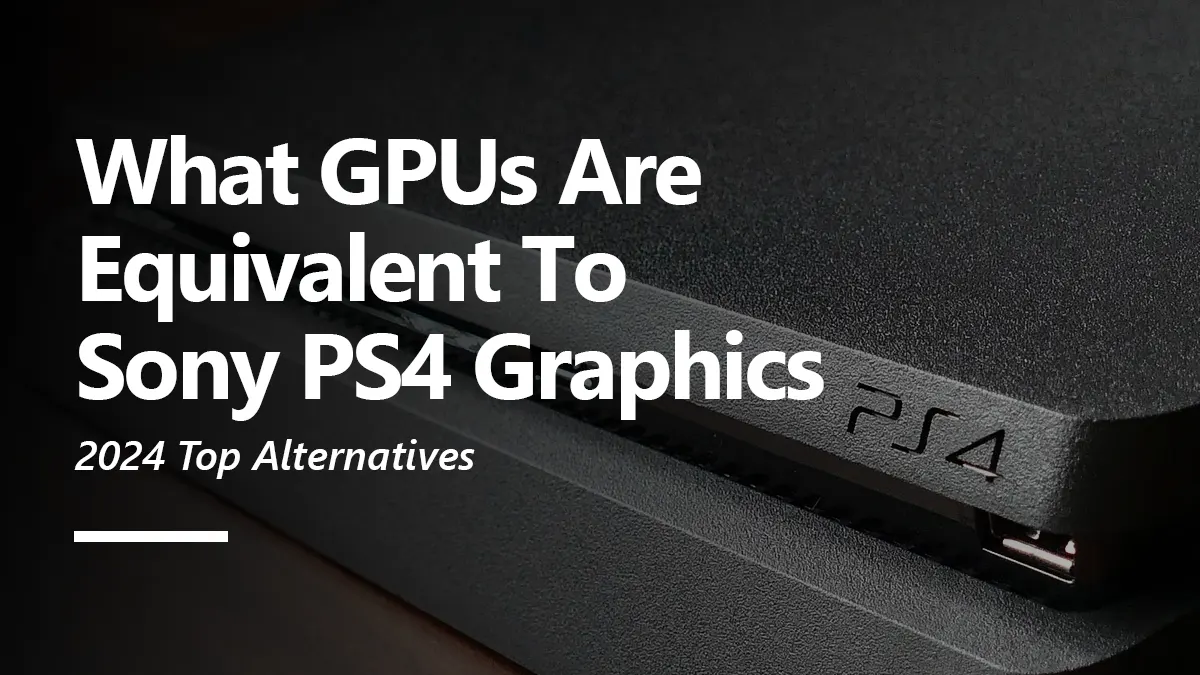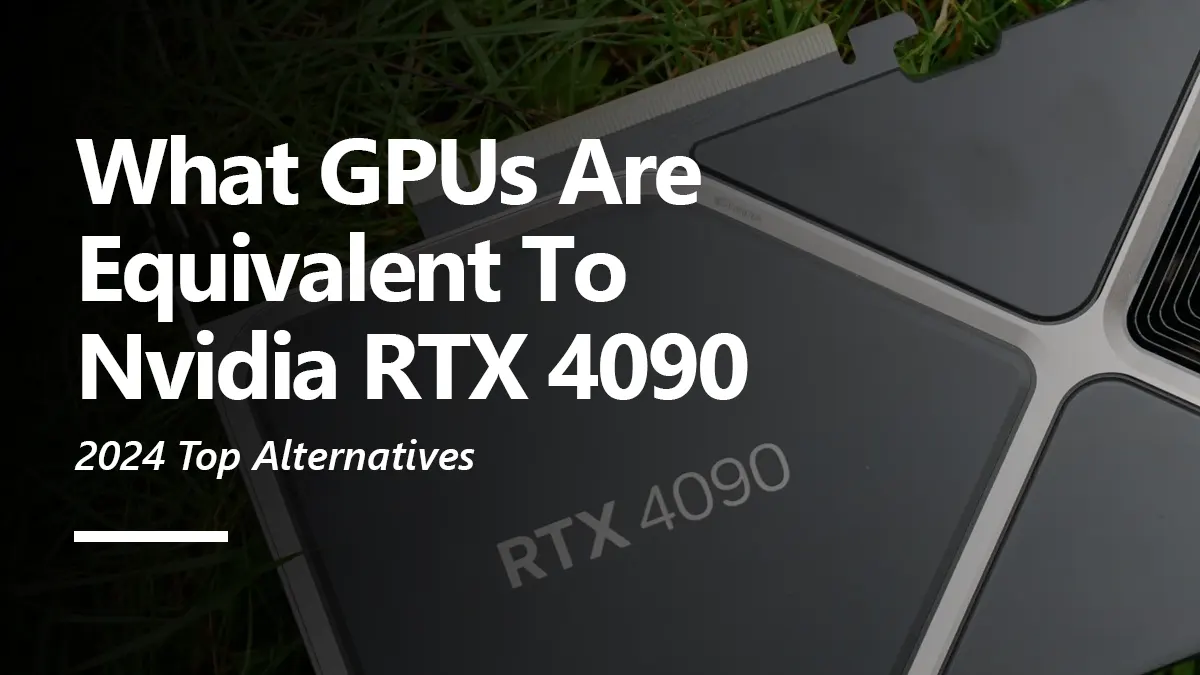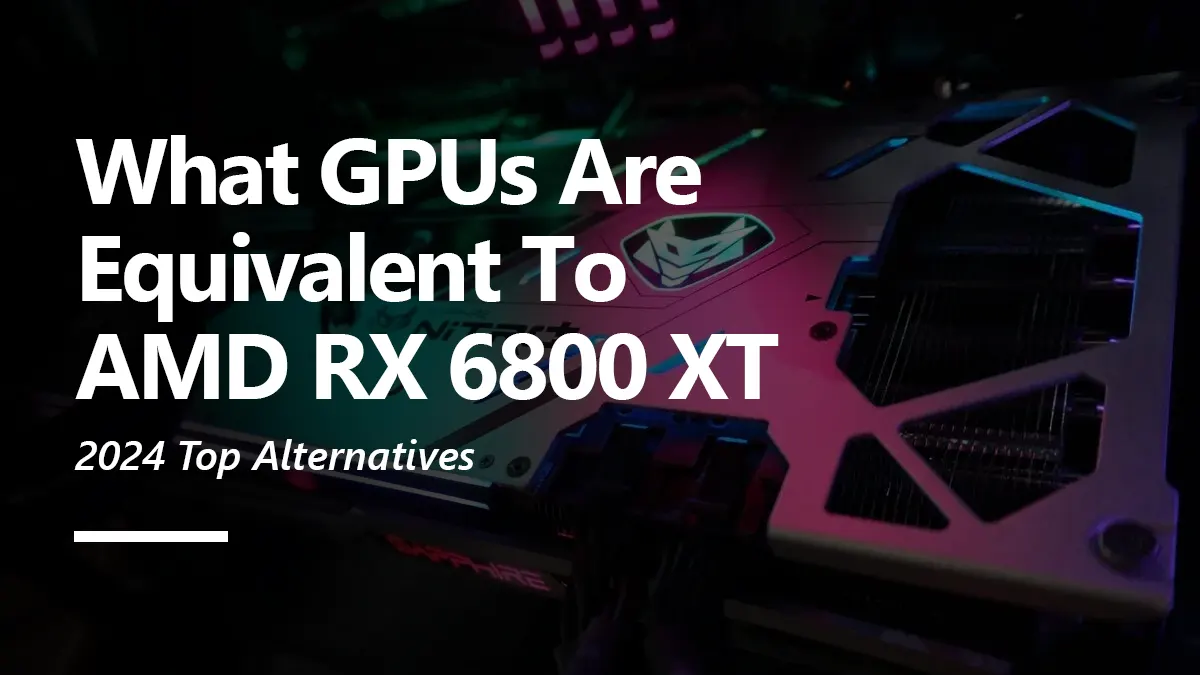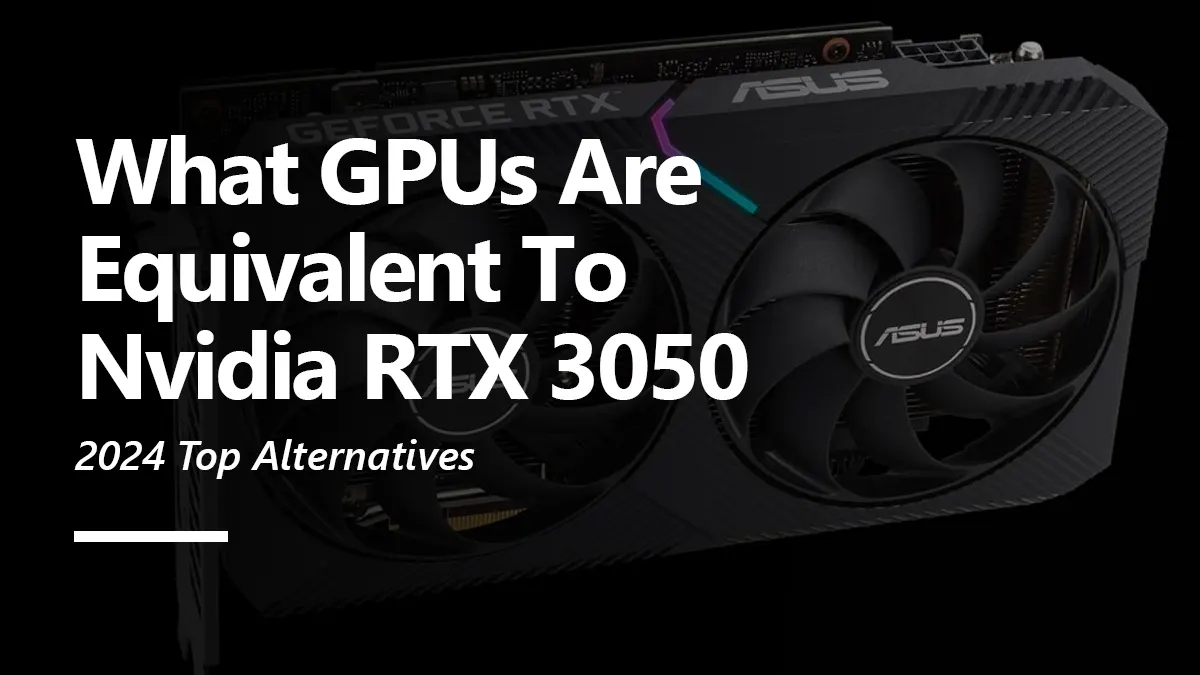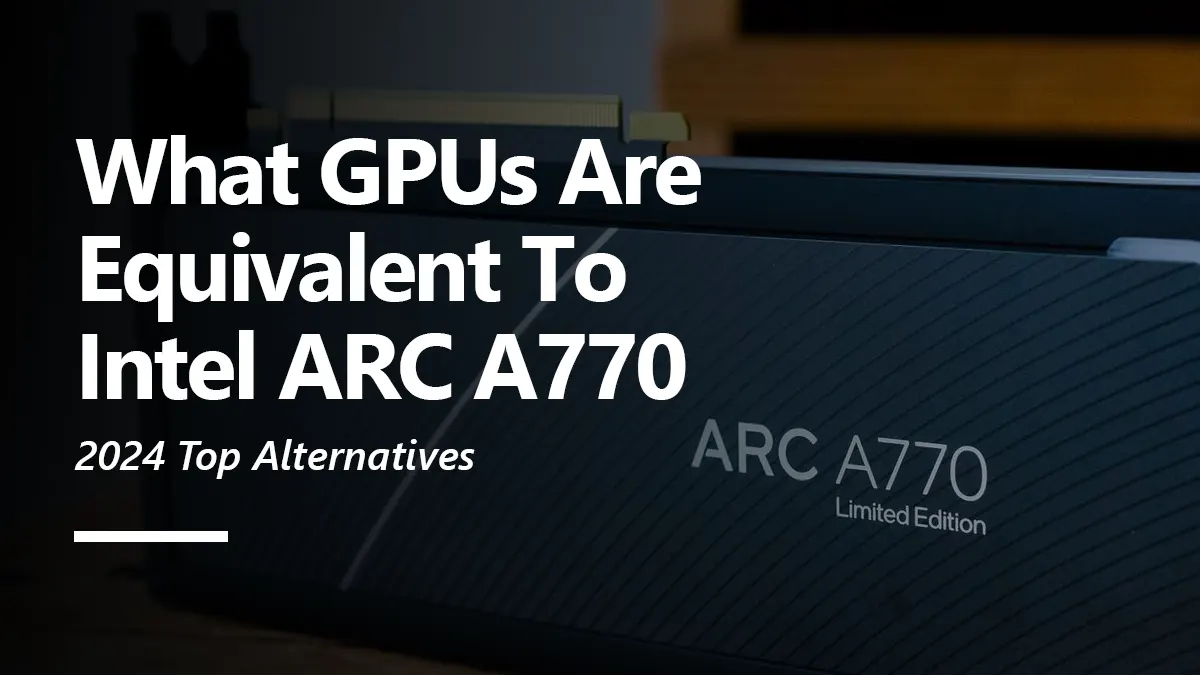With the RTX 3060, Nvidia presents another affordable graphics processor that entices budget gamers. Originally released with an MSRP of 329$, the RTX 3060 garnered massive hype as it would come with two variants with 8GB and 12GB of VRAM.
However, in the current state of the GPU market, the 3060 is still going at close to or more than its original cost, which begs the question of whether it is worth it. Before answering this question, let’s gander at what the 3060 offers in all its might.
Coming with either 8GB or 12GB memory, the RTX 3060 is a grounded performer with its 8nm chip and Ampere microarchitecture. Coming in at a 1400 – 1777 MHz frequency, the 3060 garners 3540 Shading cores with only 28 raytracing cores.
Regarding this information, we will discuss two very intriguing options that can be considered an alternative to the 3060. Although Nvidia’s optimization of its hardware is naturally peculiar, we still believe these cards would work as adequate alternatives.
GPU equivalent to the RTX 3060
Intel’s ARC A750 and Team Red’s RX 6600 XT are two very promising and prominent equivalent GPUs for the RTX 3060. The good thing about both is that they offer improvements in many areas where the 3060 lags behind. Since the competition is so tough among GPU manufacturers nowadays, most companies try to provide their hardware in very lucrative cost ranges.
ASRock Intel ARC A750 Challenger
Intel’s entrance into the dedicated GPU space is good for the competition. With its ARC graphics cards, Intel is looking to cater to gamers relying on mid-range gaming hardware. The ARC A750 is one such GPU that Intel has designed for 1080p and 1440p experience with an awesomely nominal price tag.
The ARC 750 runs on Xe HPG microarchitecture that Intel has refined over the years and can support contemporary features such as raytracing, upscaling, AI enhancements, etc. This GPU employs 28 raytracing and 448 Tensor units with 3548 Stream engines at an exciting 2050 – 2400 MHz frequency range.
Moreover, with a sleek GDDR6 8 gig memory and 256-bit width bus, it manages above 500 GB/s transfer rates and is fully equipped to handle graphical workloads. Also, its impressive feats make it a more efficient machine than the RTX 3060.
| Feature | ASRock Arc A750 | NVIDIA GeForce RTX 3060 |
|---|---|---|
| Architecture | Generation 12.7 | Ampere |
| Core Clock (MHz) | 2200 MHz (+7%) | 1320 MHz |
| Boost Clock (MHz) | 2400 MHz | 1777 MHz |
| CUDA Cores | 3584 | 3584 |
| Memory Type | GDDR6 | GDDR6 |
| Memory Size (GB) | 8 GB | 12 GB |
| Memory Bus Width (bits) | 256 bit | 192 bit |
| Memory Speed (Gbps) | 2000 MHz16 Gbps effective | 1875 MHz 15 Gbps effective |
| TDP (Watts) | 225 W | 170 W |
| DirectX Version | 12 Ultimate (12_2) | 12 Ultimate (12_2) |
| OpenGL Version | 4.6 | 4.6 |
| VR Ready | - | - |
| Ray Tracing Cores | 28 | 28 |
| Ports | 1x HDMI 2.1 3x DisplayPort 2.0 | 1x HDMI 2.1 3x DisplayPort 1.4a |
| Price | $159.22 | $337.78 |
ASUS ROG RX 6600 XT OC
This discussion wouldn’t be complete without an alternative AMD GPU, and the one we have for this article is respected by many. Made to be a decent mid-ranger, the RX 6600 XT, with its RDNA 2 design, provides a more prominent output than the RTX 3060.
Its architectural accomplishments are what makes it so great. Consisting of many improvements, the RX 6600 XT supports 2048 stream processors with 32-ray acceleration units. Its power usage is surprisingly lower than both A750 and RTX 3060 and manages to cross both in performance output. At only 160W, the 6600 XT gathers up to 2.59 GHz speeds, the highest among these three.
These speeds and 8 Gig capacity put it on top of 3060 and allow it to outperform the latter in essentially every circumstance. Further, it reaps from the goodness of AMD’s latest soft features that are becoming mainstream for most AMD users and enable you to get the most out of your hardware.
| Feature | ASUS DUAL RX 6600 XT OC | NVIDIA GeForce RTX 3060 |
|---|---|---|
| Architecture | RDNA 2.0 | Ampere |
| Core Clock (MHz) | 2000 MHz (+2%) | 1320 MHz |
| Boost Clock (MHz) | 2593 MHz | 1777 MHz |
| CUDA Cores | 2048 | 3584 |
| Memory Type | GDDR6X | GDDR6 |
| Memory Size (GB) | 8 GB | 12 GB |
| Memory Bus Width (bits) | 128 bit | 192 bit |
| Memory Speed (Gbps) | 2000 MHz 16 Gbps effective | 1875 MHz 15 Gbps effective |
| TDP (Watts) | 160 W | 170 W |
| DirectX Version | 12 Ultimate (12_2) | 12 Ultimate (12_2) |
| OpenGL Version | 4.6 | 4.6 |
| VR Ready | - | - |
| Ray Tracing Cores | 32 | 28 |
| Ports | 1x HDMI 2.1 3x DisplayPort 1.4a | 1x HDMI 2.1 3x DisplayPort 1.4a |
| Price | $400.21 | $337.78 |
Conclusion
Among the three GPUs we discussed today, the RX 6600 XT is the most powerful. Although it was 50$ more expensive than the 3060 at its launch, it has become widely available at very affordable prices, which mirrors the MSRP of the 3060.
As for the ARC A750, it still suffers from some optimization issues. However, reportedly, Intel has been pretty fixated on introducing stable updates to their systems. It wouldn’t be wrong to say that Intel’s ARC series has a seemingly promising future.
Nevertheless, the 3060 still obtains good raytracing for a mid-range card and is perhaps the best option to experience Nvidia’s broad creative suite. The pricing is a bit on the nose, but if you are willing to pay it, then it isn’t necessarily bad or underperforming.
Frequently Asked Questions
Is the RTX 3060 better than the RTX 3060 Ti?
No, it isn’t. The RTX 3060Ti is a broadly improved version of the RTX 3060 that enhances everything. With better clock speeds, more cores, and widely improved power efficiency, the RTX 3060 Ti is a much more refined product but carries a significant price bump.
Is RTX 3060 worth buying now?
Yes, it is. The RTX 3060 is a good GPU that can easily play most games with high graphics settings on 1080p and 1440p resolution. Further, you can try raytracing and DLSS upscaling without paying 800 or 1000 bucks for a flagship GPU.
